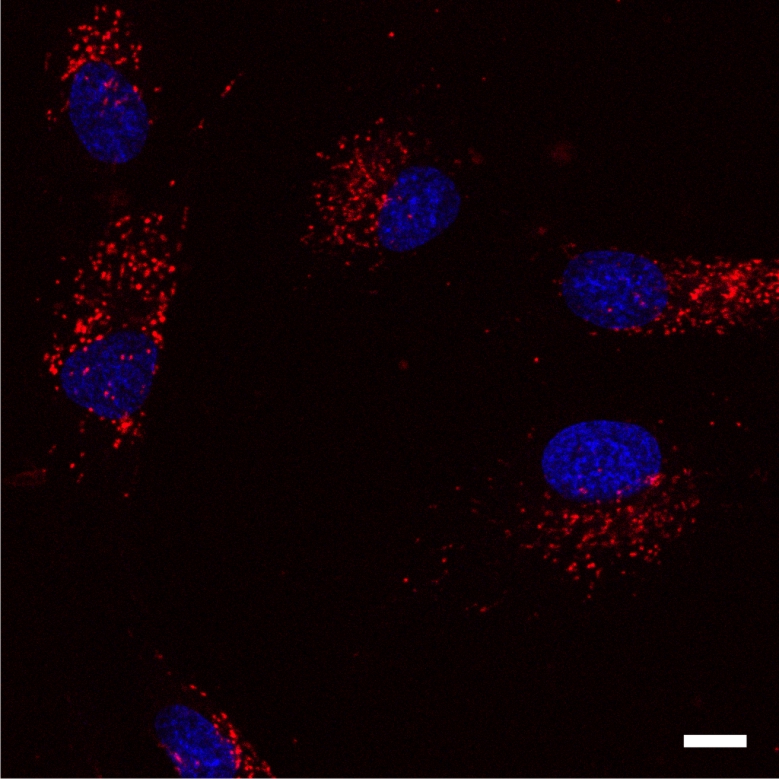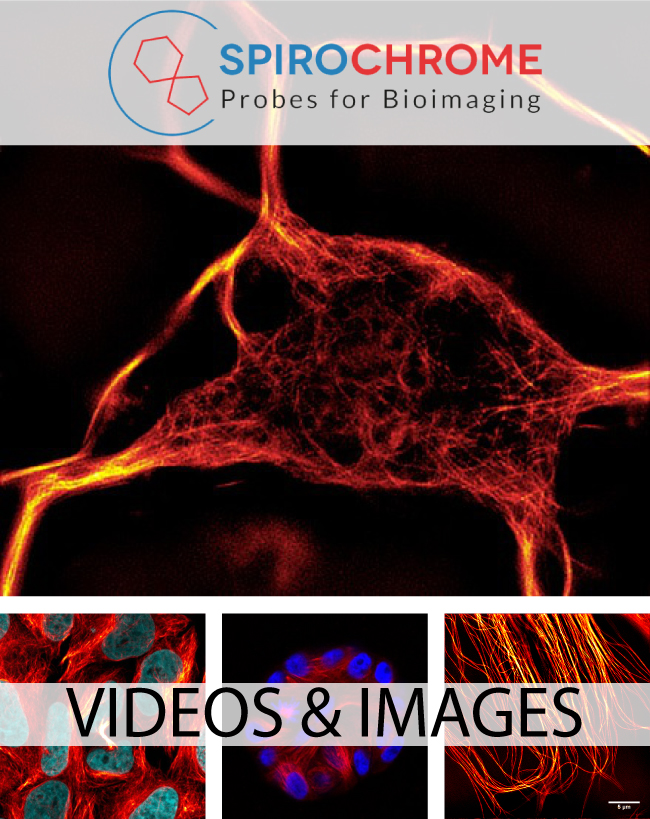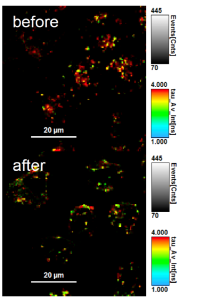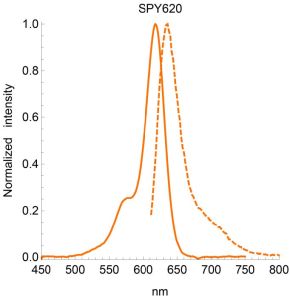SiR-lysosome is based on the pepstatin A (a cathepsin D binding peptide) which has been labeled with the proprietary fluorophore silicon rhodamine (SiR). SiR is a bright and photostable rhodamine-like dye, but with advanced properties. SiR-lysosome is fluorogenic, cell permeable and highly specific for lysosomes. It stains lysosomes in live cells without the need for genetic manipulation or overexpression. Its emission in the far red minimizes phototoxicity and sample autofluorescence. SiR-lysosome is compatible with GFP and/or mCherry fluorescent proteins. It can be imaged with standard Cy5 filter sets. SiR-lysosome can be used for widefield, confocal, SIM or STED imaging in living cells and tissue. Probe quantity allows 50 – 300 staining experiments*.
Optical properties
λabs 652 nm
λex 674 nm
εmax 1.0·105 mol-1·cm-1
MW 1237.7 g/mol
MF C67H103N9O11Si
*Based on the following conditions: 0.3 – 1 ml staining solution / staining experiments with 0.5 – 1 µM probe concentration. The number of staining experiments can be further increased by reducing volume or probe concentration.
Cytoskeleton, Inc. is the exclusive provider of Spirochrome, Ltd. products in North America.

Live human fibroblast cells stained with 2 µM SiR-lysosome (red) and Hoechst (blue) for 1 h at 37°C and imaged by widefield microscopy and imaged by STED microscopy.

For product Datasheets and MSDSs please click on the PDF links below.
For comparison information with other nuclear stains click here.










